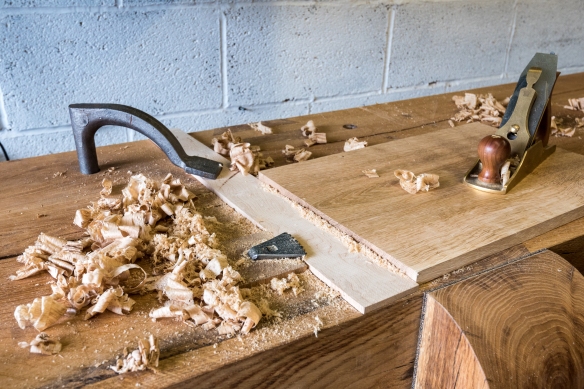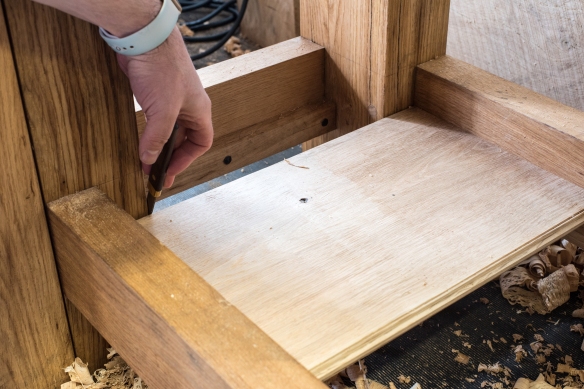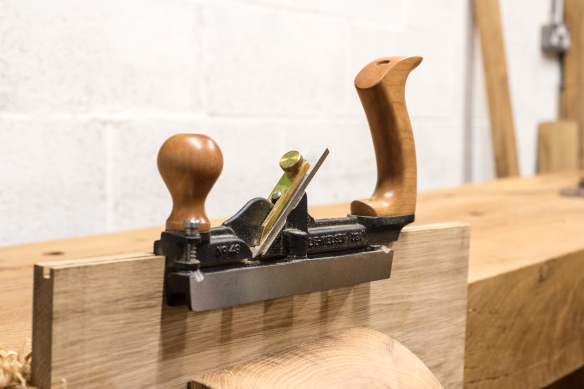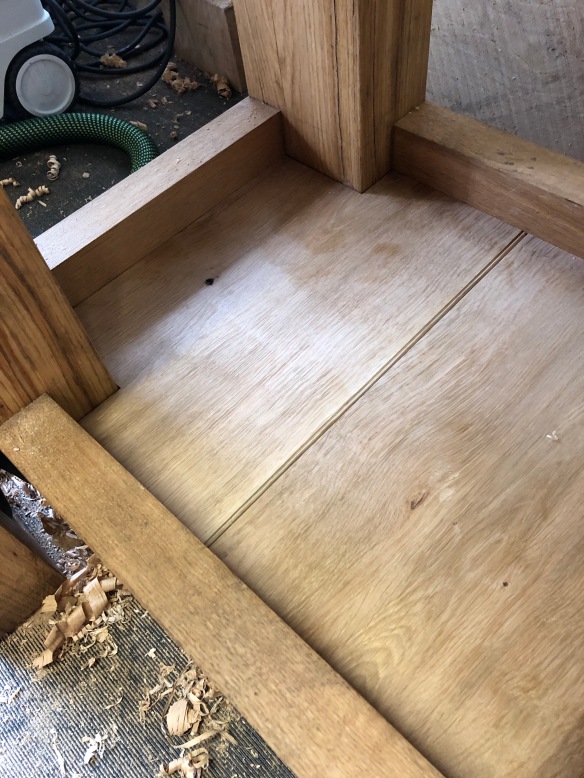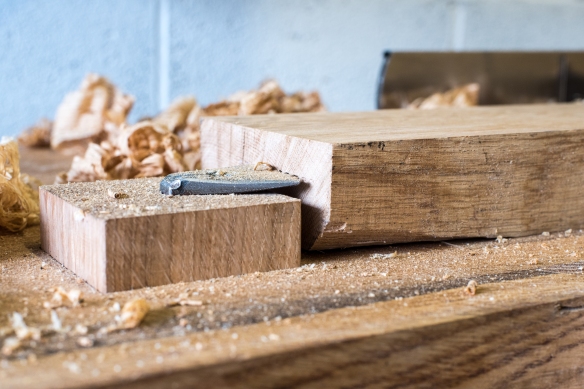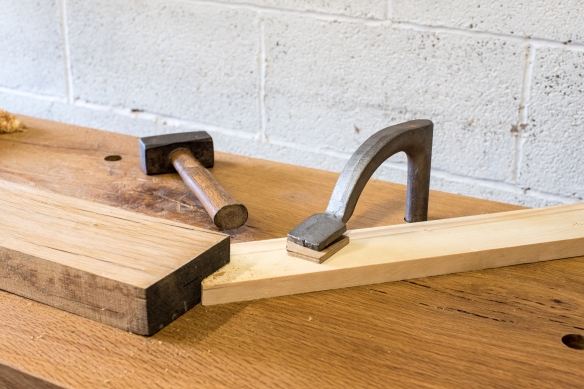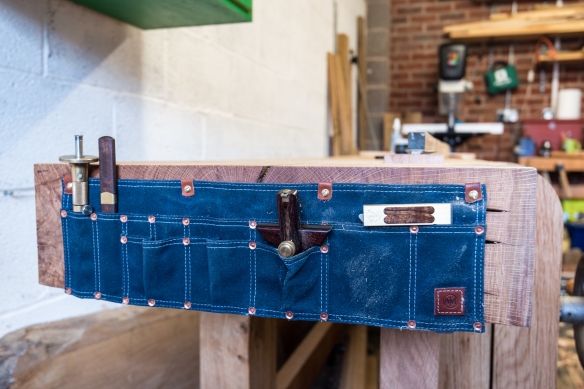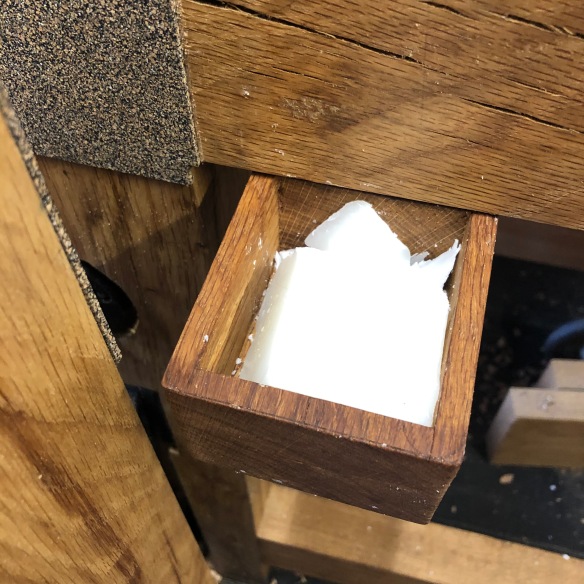I left the shelf last week with one board left to fit to the shelf between the stretchers. I had deliberately laid out the shelf so that the narrowest board fell in the centre of the shelf, and once the other boards were fitted I measured the remaining aperture and cut the board to size and cut the tongue and groove joinery which would connect it to its neighbours. After slotting the board in place I applied a coat of boiled linseed oil to the entire shelf, to match the finish on the rest of the bench.
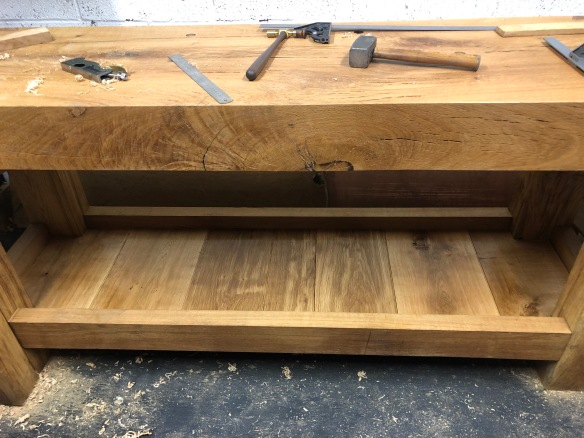
The completed shelf after a coat of boiled linseed oil
A good lump hammer or mallet is essential to the operation of the Roubo-style bench – it is used to adjust the planing stop and set holdfasts. So the final detail which I wanted to add was a peg to the front left leg, from which to hang my lump hammer. I can’t take credit for this idea – when I was teaching at the LAP storefront last autumn I noticed that Chris had fitted a peg to his Roubo bench for this purpose, and after a week or working a that bench I was sold on it as a very useful addition.
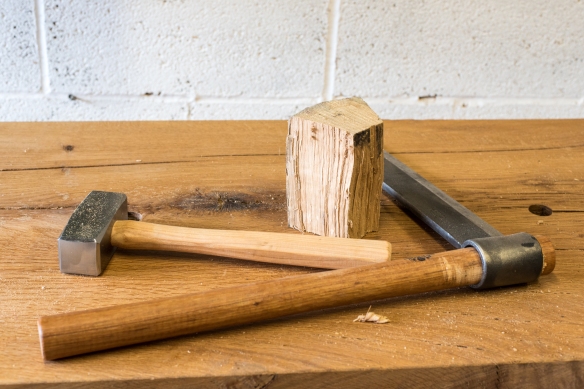
I used riven oak for the peg, which was left over from the Welsh stick chair I built for Mortise & Tenon last year
I’m still in my infancy as a turner, but simple jobs like this are a great opportunity to develop skills, and I really enjoy firing up the lathe. Because the peg will carry the weight of a 2.2lb lump hammer, I wanted to make it from reliable strong stock. After rummaging through my stash of air dried riven oak (a bucket of shorter pieces lives at the foot of my drill press) I found a suitable piece roughly 5″ long, which I brought down to rough size with a froe and lump hammer.
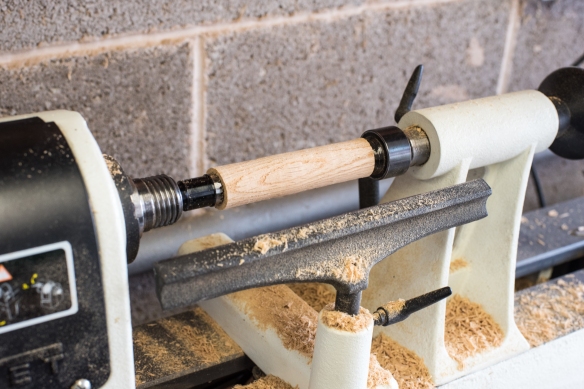
Stage one is turn the blank to a cylinder
I turned the roughly sized oak into a cylindar a little over 1″ diameter, and then turned a 1″ long tenon to just over 1/2″ diameter using a parting tool and Peter Galbert’s very helpful Caliper. With the tenon turned, I removed the workpiece from the lathe and cut the excess material using a Bad Axe 12″ carcase saw.
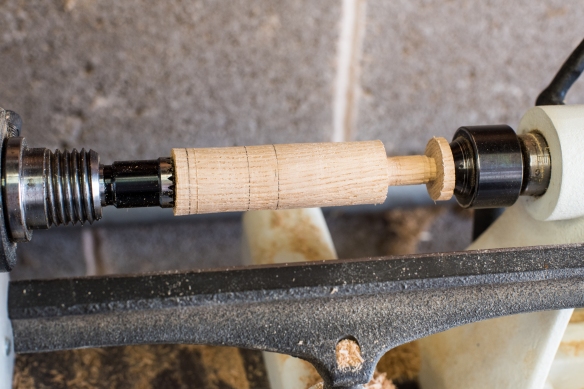
Turn the tenon, and layout the sections of the peg
I then turned the peg, using a set of zero jaws to grip the tenon. The head of the peg is roughly 1″ in diameter, and I turned the body of the peg by eye until it had a pleasing shape – no real meaurements were involved. While the form is not as elegant as the “shaker” style peg Chris has on his bench, this peg is plenty stout and should support the lump hammer without any problem. I sanded the tool mark off with 320 grit paper while the peg was on the lathe.
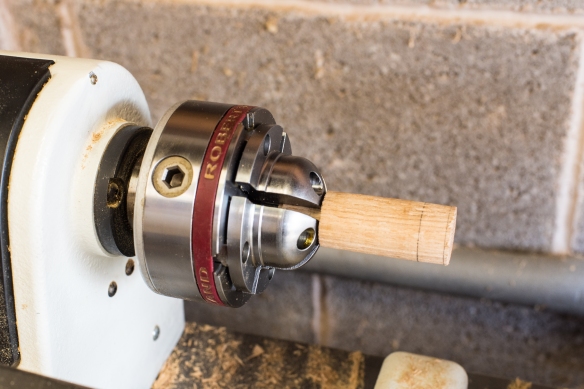
Zero jaws hold the tenon so that I can shape the peg
After checking the placement of the peg, I bored a mortise in the leg using a 1/2″ auger bit in my North Bros brace. I’ve never used the ratchet function on the brace before, but the proximity of the bench top meant that I was unable to use the full sweep of the brace, and engaging the ratchet made easy work of boring the mortise to full depth using only 2/3 turns of the brace.
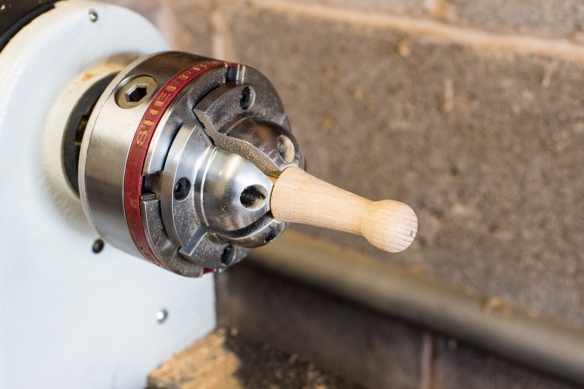
The shaped peg, ready to be fitted to the bench
The peg tenon was a little too snug to fit into the mortise, so I borrowed a chairmaking technique from Chris and compressed the tenon with a pair of non-scratch pliers. Applying a coat of hide glue allowed the tenon to slide into the mortise before the moisture in the glue caused the tenon to swell, locking it in place. A quick coat of boiled linseed oil on the peg, and the bench was finished. I’ve ordered some leather cord and once this arrives I will drill a hole in the handle of the lumb hammer and hang it from the peg, ready for work.
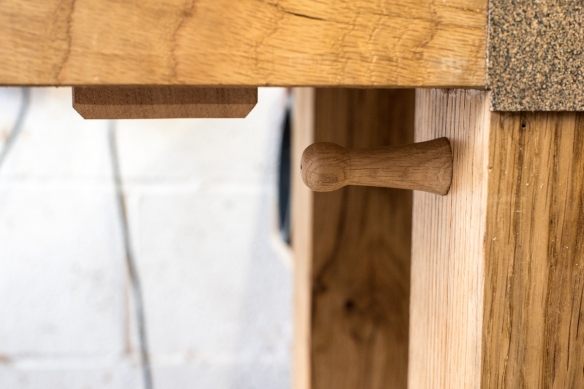
Fitted to the bench and oiled
And so, after 13 months’ work, I can finally say “Roubo Is Here“. I celebrated with a whisky at the bench to christen it.
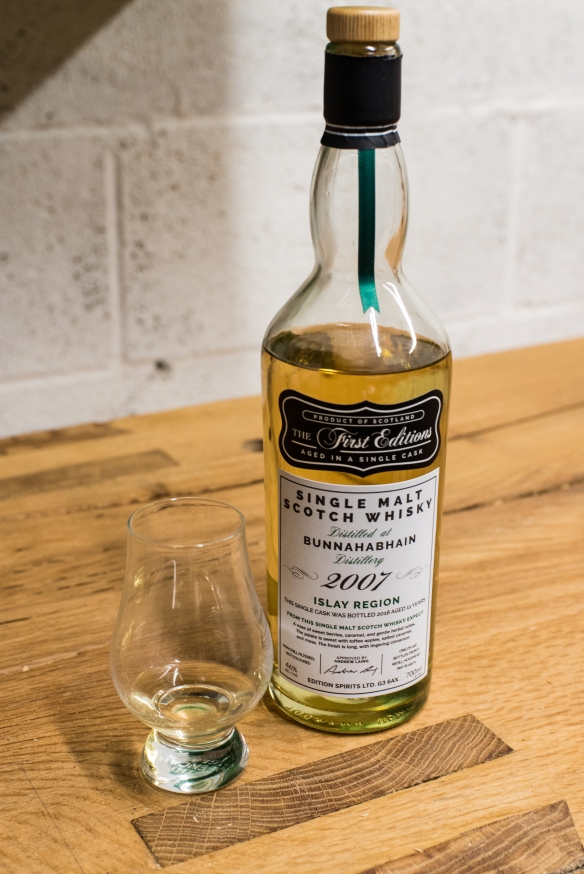
Christening the bench with a very nice single malt

